https://www.youtube.com/watch?v=nXyJdetptXg
35 Vital Chess Principles _ Opening, Middlegame, and Endgame Principles - Chess Strategy and Ideas
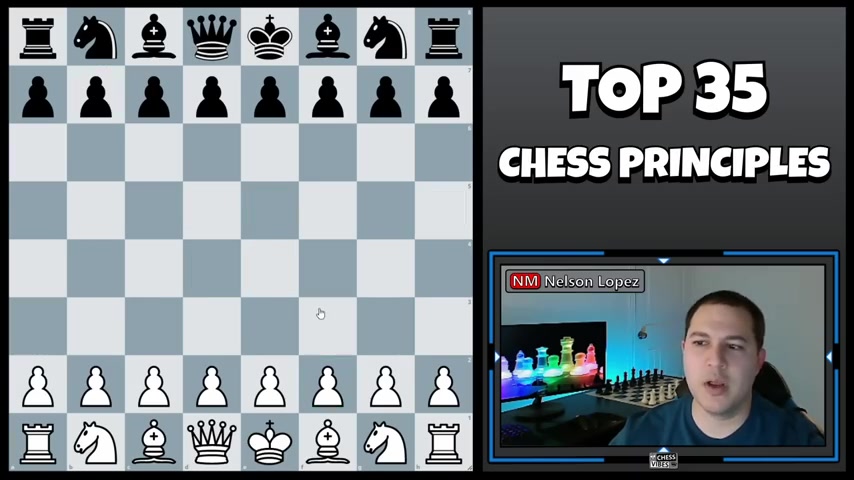
Hey guys , in this video , you're gonna learn the top 35 most important chess principles .
A chess principle is just like a guideline or a rule that generally speaking , you should follow and you're going to get into better positions .
So you've probably heard control the center of the board .
That is an example of a chess principle .
It's true .
Most of the time , sometimes you will need to control some other squares on the board , but usually the center is most important .
And what you might not know is that there are actually hundreds of different chess principles .
So in this video , I've narrowed down the top 35 that I think are the most important and I'm gonna share those with you right now .
All right .
Principle .
Number one , no surprise here is control the center of the board .
Usually the player who controls the center of the board has a better chance to win the game than somebody who is making a lot of moves on the side of the board .
Principle .
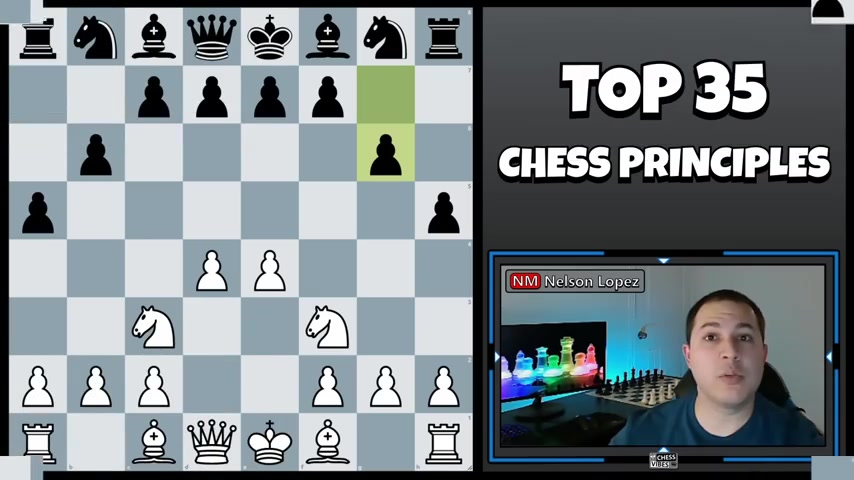
Number two is develop your pieces quickly , developing your pieces just means moving your knights and bishops off of the back rank .
So night here night here and then getting your bishops out in this position , white is gonna have much better chances to win the game because he has developed his pieces while black has not and just made a bunch of pawn moves .
Principle .
Number three nights before bishops , usually when developing , you want to develop your knights first and then follow it up with your bishops .
Principle .
Number four , don't move the same piece twice in the opening .
If you're moving the same piece multiple times in the opening , it means you're not developing your other pieces and you're gonna fall behind in development and probably get into a worse position .
Principle .
Number five is , don't bring out your queen too early .
Although the queen is a powerful piece .
If you bring it out too early , it just ends up getting harassed by your opponent's pieces and you waste a lot of time .
As an example .
If I play E four D six and I bring my queen out immediately after night of six , I have to move my queen .
Maybe I'll move it over to a five after night C six have to move my queen again .
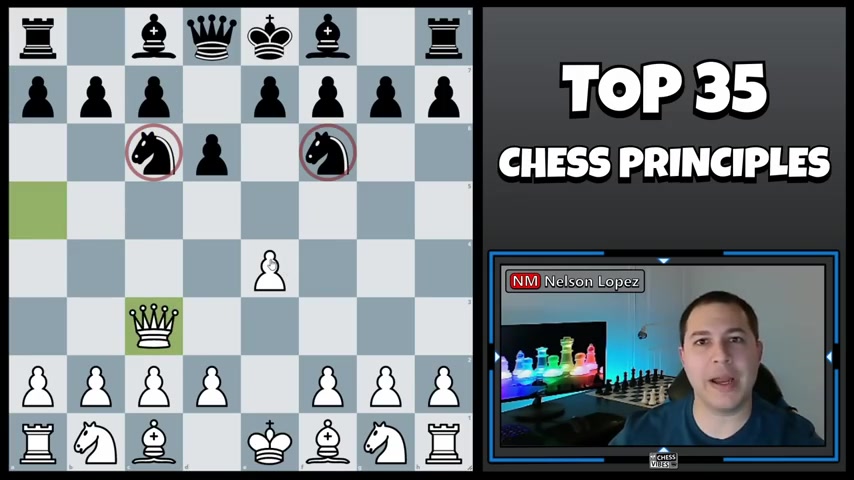
And all of a sudden , I'm falling behind in development .
So don't bring out your queen too early .
Principle .
Number six is castle before move 10 .
If you look at this example , it's possible to castle in as little as four moves .
And usually after you castle , your king is safe behind a wall of ponds better than being in the center of the board .
Principle number seven is connect your rooks .
So after you've developed your pieces and you've castled , you can simply move your queen up and now your rooks are connected .
This is beneficial because your rooks protect each other .
They can help each other and they also have easy access to go to whatever file you need them to , which is gonna be most beneficial for you .
Principle number eight is that rooks should go on open or half open files in the position on the board right now .
The E file is an open file because there are no pawns on it .
So a move like rook to E one would make a lot of sense because it's putting my rook on the open file .
A half open file is a file that only has one color pawn on it .
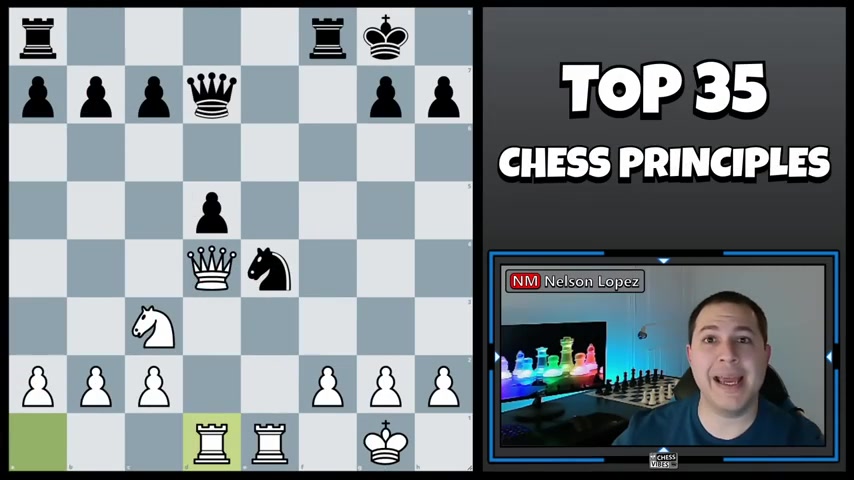
So for example , the D file is a half open file because it only has a black pawn and no white pawn .
So this would also be a smart move because I'm putting this rook on a half open file .
Black's rook on F eight is already on a half open file because there's only one color pawn on it .
Principle number nine , knights on the rim are grim .
You can see in this position how blacks knight is very effective covering a lot of important squares in the center .
And my night on the side is not doing as much .
It only covers a few squares .
So keeping your knights towards the center of the board is better than putting them on the side .
Principle .
Number 10 , try to avoid doubled ponds and this position of block captures my night and I recapture with this pawn , I've created a set of doubled pawns .
Doubled pawns are when one pawn is on the same file as another pawn .
This is usually a disadvantage because this guy is blocked by this guy so he can't move .
And also they can't help each other and defend each other if they needed to .
It's very easy for me to move this pond up and it's defended by this one or to move this one up and it's defended by this one .
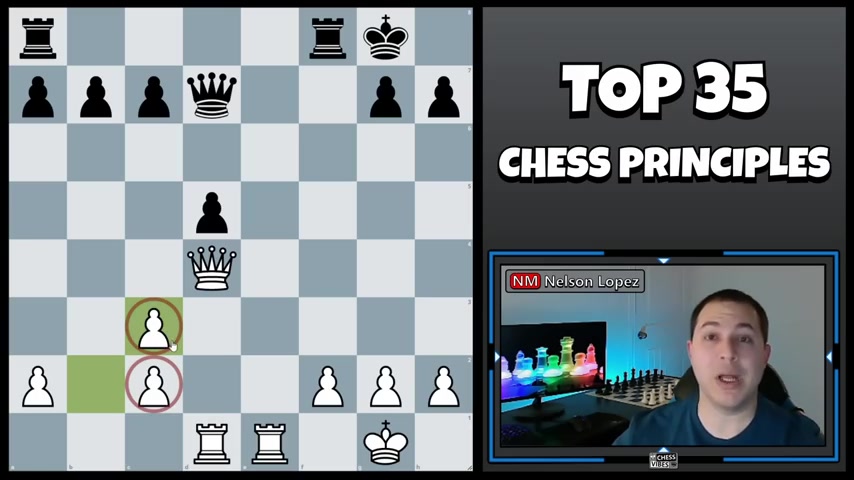
You can't do that with doubled pawns .
So usually you wanna try to avoid those .
Principle .
Number 11 is try to avoid isolated ponds .
Isolated ponds are ponds that have no ponds on the adjacent files .
So this a pond is an isolated pond because there's no ponds of the same color on the file right next to it .
And these double ponds on C two and C three happen to be double isolated ponds because again , there are no white ponds on either side of them .
So isolated ponds and double isolated ponds are particularly weak and they can't help each other .
Like connected ponds can principle number 12 , try to avoid backward pawns in this position if black plays pond to C four .
He's created a backward pawn on D five .
A backward pond means that all of the pawns on the adjacent files have been pushed in front of that pond and can therefore no longer help protect it .
When this pond was back here on C six , it was protecting it .
So it wasn't a backward pond because of the way it's been pushed forward .
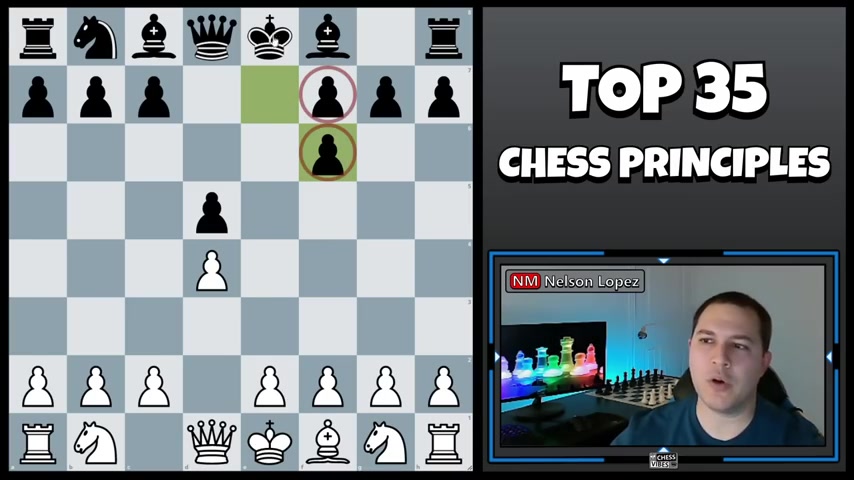
OK , guys , I'm going to show you some quick variations out of the Italian game , also known as the Juco Piano .
It's actually not an opening that's preferred by Grand Masters because it's considered somewhat draw .
I and the ideas are not as deep as what you would find in .
For example , the queen's gambit or the Roy Lopez or the Spanish game .
But it's a good way to get started , I think with very straightforward developing moves .
So the Italian game starts with E four and if your opponent responds with E five , you would proceed with what's probably the most logical and expected move knight to F three , attacking the E five pawn .
Now , let's say black brings out this night to C six .
The Italian game is characterized by this move right here .
Bishop to C four as opposed to bishop to B five , which would be the Spanish .
But we're looking at the Italian .
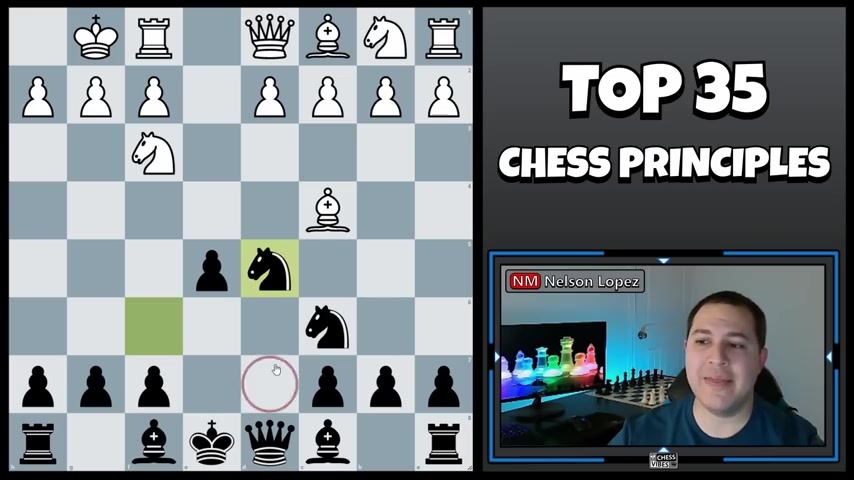
If your king is still in the center , in this position , black could consider playing D five , but it wouldn't be a good idea because after white trades , he started to open up the center and his king could come under pressure from White's rook because he hasn't castled yet .
So it would be better for black to castle first and then consider a move like D five , which is gonna start trading and opening up the center on the board .
Principle number 16 is that two minor pieces are generally better than a rook in a pawn .
Minor pieces are knights and bishops .
Obviously , these are the rooks .
So in this position , if I were to capture with my knight , black captures , I capture , he captures , I just lost a knight and a bishop which is six points .
I gained a rook in a pawn , which is also six points .
But that it puts me at a disadvantage because the knight and the bishop are better than the rook in the pawn .
Generally speaking .
So don't make a trade like that unless you have a very specific reason to do .
So .
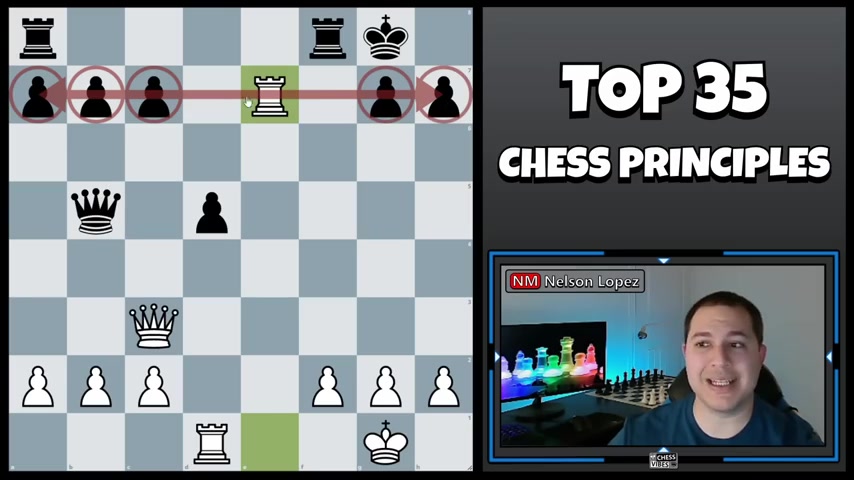
Principle number 17 is similar , but three minor pieces generally is better than a queen , even though they both add up to nine points .
Usually the three pieces will greatly outperform the queen principle number 18 is that Rooks are very strong on the seventh rank .
So since I'm white , the seventh rank is here for black .
The seventh rank is actually the second rank , which would be here .
But in this position , I have the ability to play Rookie E seven , which is a very strong move by placing my rook on the seventh rank .
You can see I have lots of good targets and white is in a very good position because of the ability to get the rook on the seventh rank .
Principle .
Number 19 is that doubled .
Rooks on an open file are very strong in this position .
White already has control of the open file with one rook , but he has the ability to put two rooks now controlling that open file and it prevents black from gaining control of that file as well .
So two rooks on an open file is very strong .
Principle .
Number 20 bishops are better in open positions .
Knights are better in closed positions .
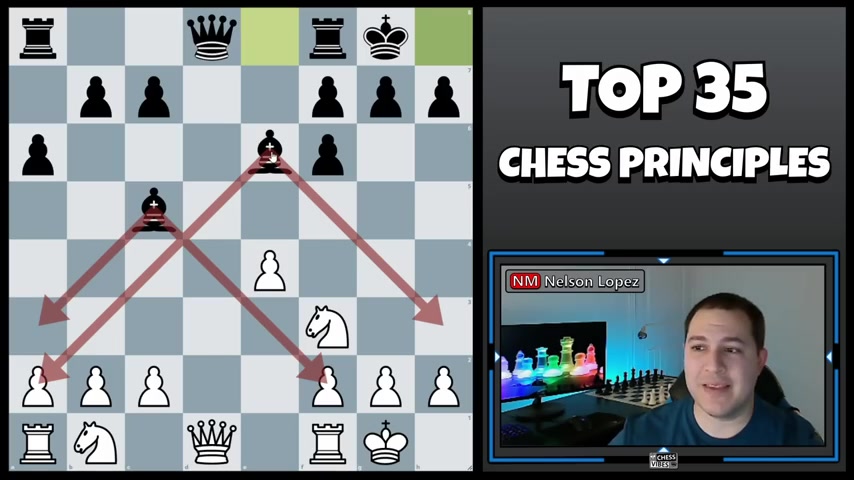
So let's say really quickly , we go to C four .
The opponent goes to C five .
The best continuation is C three to try to keep the initiative .
Other moves such as knight to C three .
Castling are also OK .
D three is also OK .
But this is the best continuation or is regarded as such , let's say you have knight to F six attacking this pawn now , instead of going D four , which is also probably a good , maybe the best way to play it .
We're going to look at this modest continuation D three .
Now , black castles and white immediately jumps into his territory looking for trouble .
So black doesn't really know what white is up to , but he goes to kick him with the H six pawn .
And this allows for a nice little sacrifice play with H four .
So black snaps the night .
H takes G and now we have this beautiful open file for our rook .
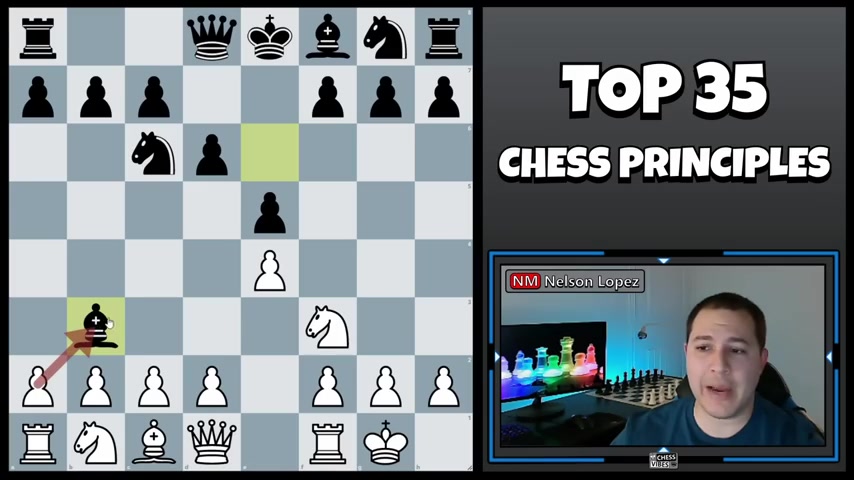
So Black wanting to keep his material advantage retreats the night .
And now with the queen coming to H five , black is busted .
He actually only has one move to stop maiden one which is bringing the rook to E eight , giving the king a little bit of space to escape .
But rather than going queen takes a night , we go queen takes F seven , forcing the king into the corner .
And then one more sacrifice rook takes H seven .
The king has to take the rook and now the queen just returns to H five checkmate with the bishop cutting off the G eight square .
So that's a miniature that was played by Greco , maybe the first genius of chess .
But it illustrates a lot of good ideas like the use of a sacrifice to open a file .
Um It also shows in the exchange trading material for time and space because it's one unit of time when Black retreats his night to age seven .
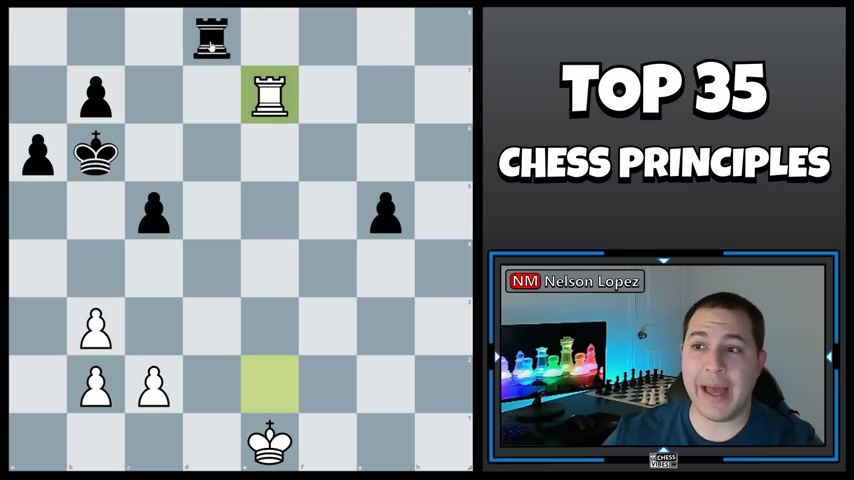
A really good move for him would be to put his rook behind his past pawn so that they can support it as he pushes it and tries to eventually get a queen .
If black didn't know that and played a move like rook here to defend his pawn , that way , it's not gonna be as good .
And now white also has the ability to put the rook behind the past pawn , which creates pressure .
And at any point , if the pond tries to move forward , the rook is still going to be attacking it really making it hard for that pawn to move forward .
So Rook should go behind past pawns .
Principle number 25 is that two connected pass pawns on the sixth rank will always be the rook in this position .
It's white's turn .
And by playing this pawn forward , he now has achieved two connected and pass pawns on the sixth rank .
And if this rook tries to stop them .
He's not gonna be able to do it .
For example , if the rook goes here to try to get this pawn , white can simply move this one forward .
And if the rook captures , white is gonna get a queen , we go back .
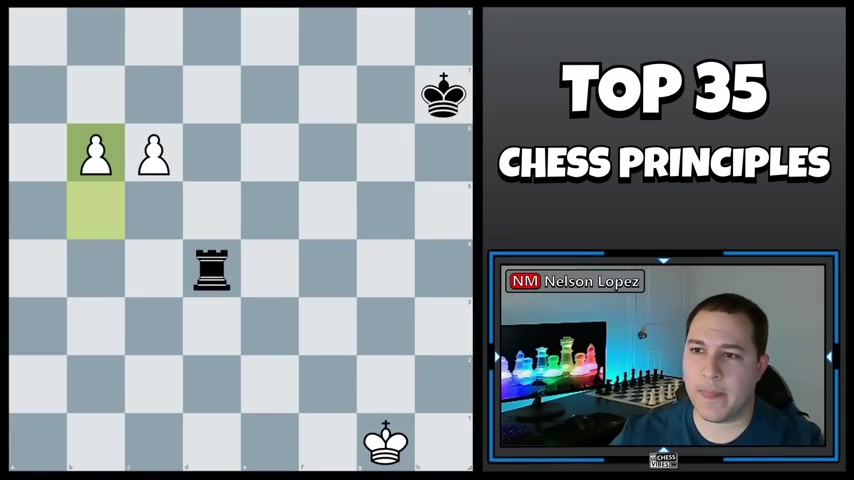
And it's more than anything space for that rook to dominate the H file .
So once the queen joins the rook on the H file , black is hopeless .
So that was just a quick look at the Italian game or the Juco Piano .
I recommend it for young players .
It's a great way to get your chess game started .

But generally speaking , attack the base of a pawn chain principle 27 is that knights are usually one of the best blockaders of ponds .
So in this position , black has a past pond that he's trying to push forward .
And white would like to blockade it to keep it from moving .
A good option would be to blockade it with the knight .
The reason this is good is because knights can still function very well because they can jump over pieces .
They can still put pressure on the normal squares that they would be able to put pressure on .
At the same time , they're blockading the pond from moving principle .
Number 28 is if your position is cramped , you should try to trade pieces to open it up and give you more options .
So in this position , Black's position is very cramped .
This bishop is stuck .
This bishop is stuck .
He doesn't have a lot of options for his pieces .
So one thing that he should consider doing is trading pieces .
In this example , he can capture here .
If white captures , he can capture here .

If white captures , he can capture here and by trading off all those pieces , now he's able to move this night somewhere and then this bishop can go somewhere .
It's a much better position for Black having traded off all those pieces than if we go back to this position where he could hardly move .
So in a cramped position , try to trade pieces .
Principle number 30 is that when you're a head material , you want to trade pieces but not trade pawns in this position , white is ahead a rook for a night .
It's called being up the exchange .
He has a two point advantage .
So he would want to trade the queen and rook for the queen and rook but not trade the pawns .
That's because after you trade these pieces , the rook is going to be very strong , he's gonna be able to capture some of these pawns most likely .
And then he can get a queen if he trades off all the ponds .
So there's no pawns left , then the rook in the night , it's , it's gonna be very hard to win that position .
So you wanna leave pawns on the board in your head material and trade off the other pieces .
Principle .
Number 31 very similar is the opposite of that .
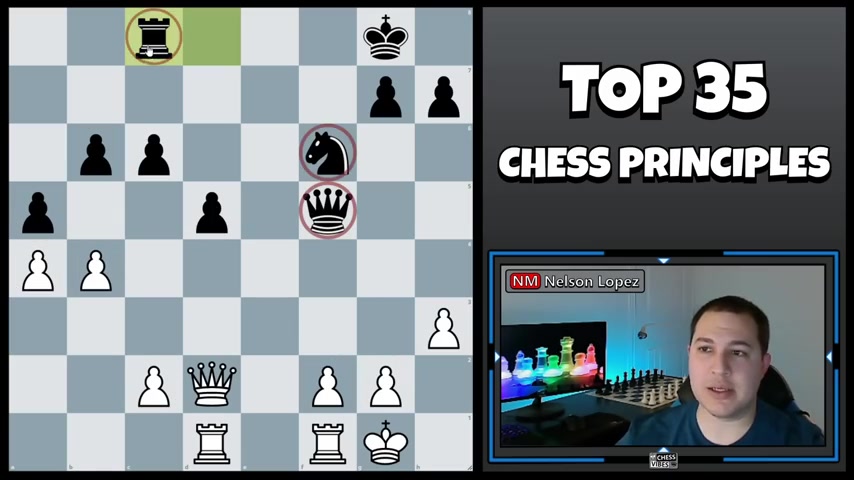
When you're losing or your down material , you want to trade off all the ponds if you can , but don't trade the pieces and that's gonna increase your chances of getting a draw .
So in this position , if white captures this pawn and black recaptures , he could take this pawn with his queen , but that's not good for white because he's essentially gonna be trading pawns .
He wants to keep as many pawns on the board as possible .
So a better move might be queen to D three trying to trade the pieces and not trade the ponds .
I hope that made sense .
If you have to rewash that part again , feel free to do .
So .
That's an important one .
It's really good to know .
Principle .
Number 32 is that opposite colored bishop .
Games are dangerous in the middle game and draw i in the end game .
What do I mean by that in this position ?
Both players have an opposite color bishop .
That means whites .
Bishop is on a dark square and black's bishop is on a white square .
So they're opposite colored bishops .
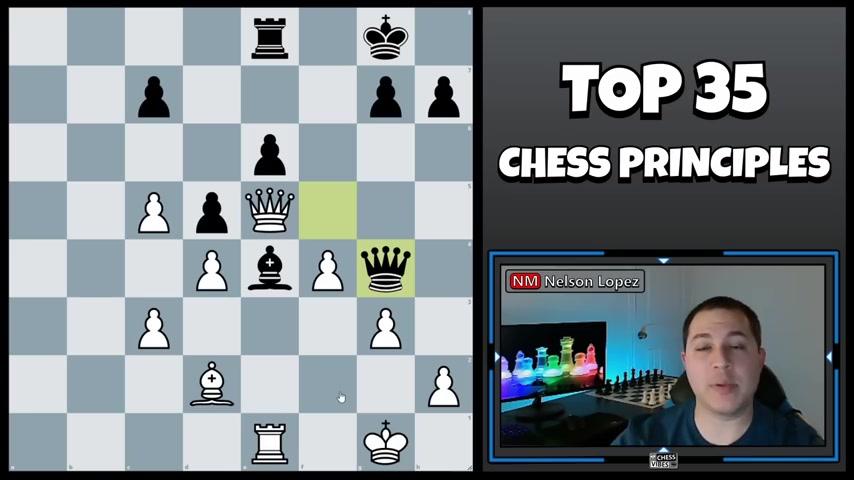
And since this is still in what I would say , the middle game , it's very dangerous and and white has to be very careful .
And you can see after this move bishop check king G one after queen G four , the queen's coming into F three and then there's gonna be a battery .
White's gonna get check mated .
So the only thing he could do is sacrifice his rook for the bishop to stay alive .
And that just shows how it's very dangerous .
When you're playing in a game with opposite colored bishops , you have to watch out for attacks on your king .
And the reason it's dangerous is really because your bishop can do nothing to prevent the other person's bishop .
So in this case , there are weaknesses along these white squares and this bishop can do nothing about it .
If it was a knight , you could position it to help defend .
Or if you had the same colored bishop .
If you had a bishop on the white squares , you could even trade it off for that bishop .
But because they're opposite colored bishops , you can't do that very dangerous .
Now , the flip side of that principle is that in the end game , the games become very draw .
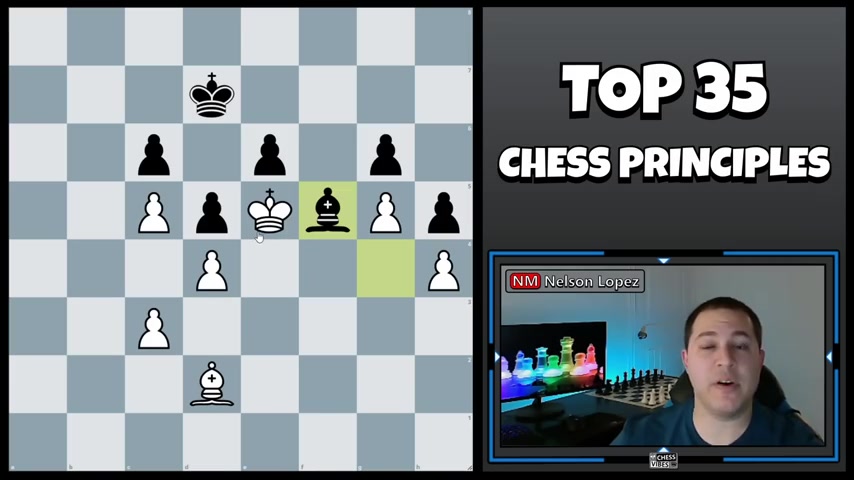
You can see in this position , both players have opposite colored bishops .
And because of that , the bishop can't really do anything about any of these pawns .
And likewise , blacks bishop can't do anything about white pawn .
So the pawns are just gonna end up sitting there , the kings will probably just have to move back and forth and nobody's gonna be able to win this game .
So keep that in mind , opposite colored bishops are draw i in the end game , but very dangerous in the middle game principle , number 33 is what's called .
Don't play hope chess .
Now , if you've never heard of this , hope chess is where you play chess and you hope that your opponent does something or you hope that your opponent doesn't see something or I hope he moves there .
If you're playing chess like that , you're probably not going to do very well .
You always want to consider the fact that your opponent might do the very best move .
An example of hope chess would be I'm gonna play here .
I'm gonna bring my bishop out .
I'm gonna bring my queen out and I'm gonna hope that he doesn't see the check mate .
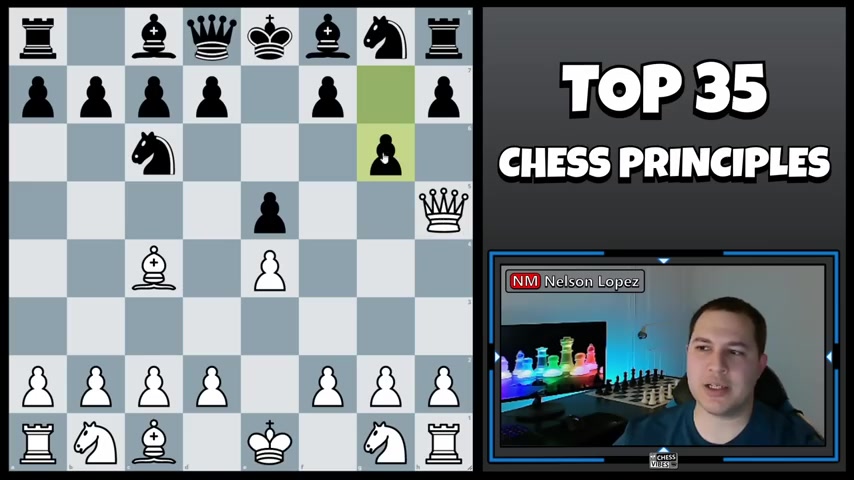
I'm gonna hope that he doesn't know about the scholars mate and I'm gonna win for moves .
I'm gonna hope he falls for my trick .
That's not good because if he knows what he's doing , he plays G six .
Stops your queen .
You come back to try it again because you hope he doesn't see it .
He's gonna play nine F six .
You might play queen B three again .
I hope he doesn't see it .
He's gonna play queen E seven .
And now all of a sudden you're in a bad position , you just wasted a bunch of moves with your queen because you were playing hope chess .
So try not to do that .
Principle 34 is when you see a good move , stop and look for a better move in this position on the board , black just played here , which is really a bad move .
And so the move that might jump out to a lot of people is , oh , that's a free rook .
That's a really good move .
It's good for white .
But if you take a second and look for a better move , you might notice that knight D six is actually a beautiful smothered checkmate .
So when you see a good move , take a second and look for a better move .
And Principle number 35 is that a really good chess player ?
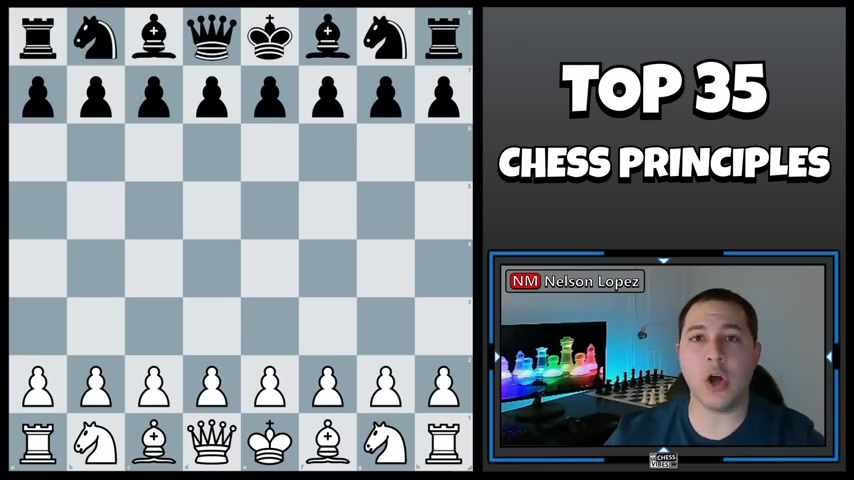
Knows the right time to ignore chess principles .
All these principles are really good most of the time .
But there's always gonna be situations where they don't apply and where it makes the most sense to go against what the principal would say .
And that's what determines a really good chess player from somebody who's still learning .
So just know that everything that I told you is a good general rule of thumb , but be on the lookout for special situations where they may not apply .
And that will come with practice as you get better and better , you'll pick up on when it's OK to break the rules if you will .
Well , I know that was a lot of information really fast .
So I went ahead and put together this spreadsheet which lists out all of the 35 principles that we just talked about .
I'm gonna throw this up on the screen and just leave it for a little bit .
If you want to print , screen , pause the video and print screen and print this out so you can use it for reference .
Feel free to do .
So I know for some people , people who are just starting out , this might seem a little bit overwhelming , but don't worry , it took me years and years to learn all of these .
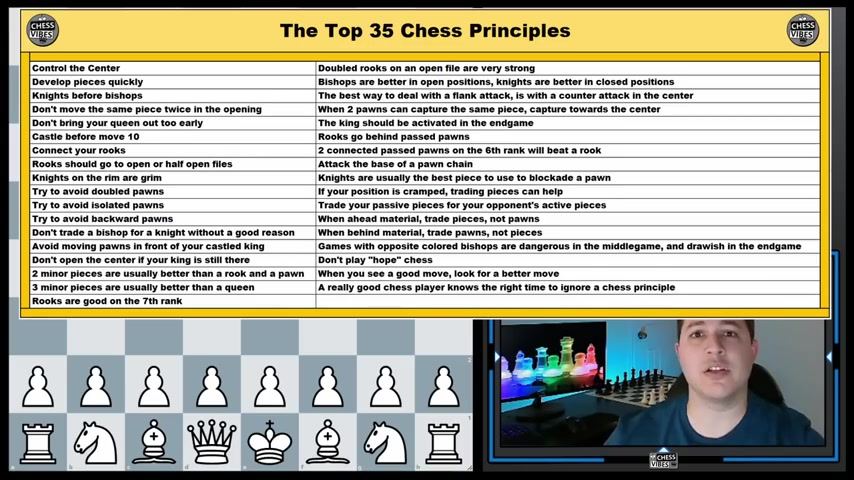
So you've got time , the best way to tackle it is just one principle at a time .
Practice it in your games until it starts to become a habit , then move on the list to the next one and keep doing that until you feel like you've gotten a good grasp of these principles .
If you guys learn something and got some value out of this video , it really helps me out a lot .
If you would hit that thumbs up button , I really appreciate it .
But as always , make sure you stay sharp , play smart and take care .
Are you looking for a way to reach a wider audience and get more views on your videos?
Our innovative video to text transcribing service can help you do just that.
We provide accurate transcriptions of your videos along with visual content that will help you attract new viewers and keep them engaged. Plus, our data analytics and ad campaign tools can help you monetize your content and maximize your revenue.
Let's partner up and take your video content to the next level!
Contact us today to learn more.